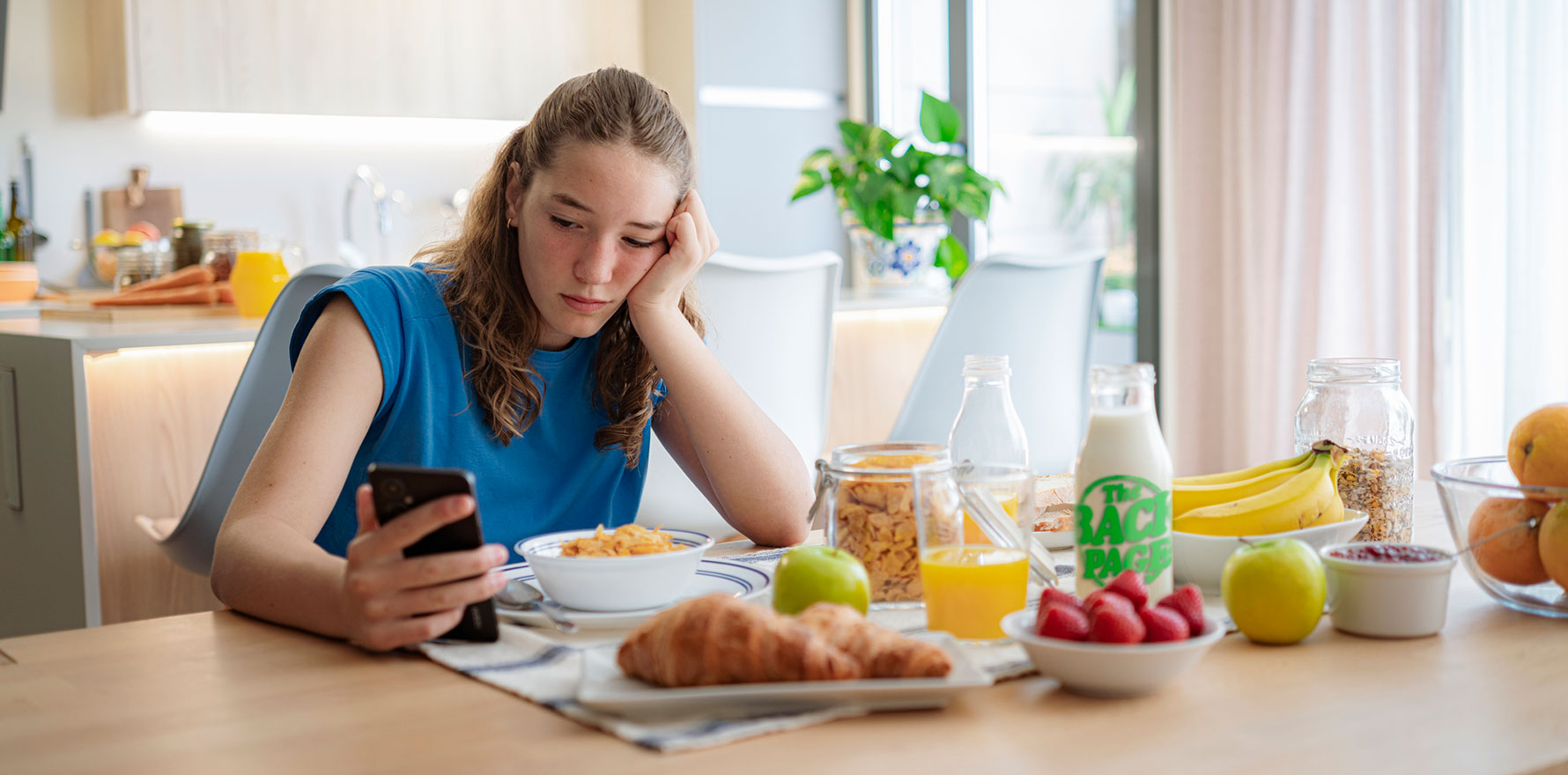Excessive and problematic use have an impact on what teens eat.
You might think that every avenue for panic about social media’s effects on young people’s wellbeing had been explored. Not so fast!
A new study has mapped good and bad dietary habits on to social media behaviours using the 2017-18 Health Behaviour in School-aged Children survey of adolescents across Europe and North America (relatively old data given the topic).
The team found that too much social media tended to make kids eat bad things. And good things.
Participants had to quantify how much they ate per day of fruits, vegetables/salads, sweets and sugary beverages, and the results were packaged into dietary scores and then classed into good, moderate and poor. They also said whether they had breakfast daily or not.
Social media use (SMU) was measured in two ways: frequency of contact, which classed participants as either excessive or non-excessive users; and scores on the Social Media Disorder Scale (measuring levels of obsession, cravings, conflicts over social media and other variables), which was dichotomised into problematic or non-problematic use. Both excessive and problematic use were slightly higher in girls.
Sex, age, sedentariness and family socioeconomic status were also recorded.
As suspected, those with excessive and problematic social media use were less likely to have a “good” diet score.
Excessive users of both sexes were up to 20% less likely to report good dietary intake; with problematic use, boys were 54% less likely and girls were 64% less likely.
Excessive and problematic use made both sexes much more likely to consume a lot of sweets and sugary drinks and less likely to have breakfast every day. In the biggest disparity, girls with problematic use were twice as likely (24% vs 12%) to consume sugary drinks regularly.
Other specific behaviours gave less obvious results. Fruit and vegetable intake was lower in problematic users but higher in excessive users of both sexes.
“Adolescents share and interact with unhealthy food content on social media, and spend more time looking at unhealthy food advertisements posted by peers compared to those posted by companies or celebrities,” the paper says, and ads for unhealthy foods are more prevalent than those for healthy ones.
Poor diet could be attributed to the mental health challenges of problematic social media use, they say, which “has been consistently linked to a higher risk of lower well-being, poorer emotion regulation, and greater depressive symptoms among adolescents, while poor well-being outcomes have been found to be associated with low fruit and vegetable consumption in adolescents”.
There may also be mindless eating while scrolling, and addictive use may leave less time for proper food preparation, leaving young people to rely on packaged, highly processed instafood.
On the other hand, those using social media merely excessively may be shamed into eating more vegetables through appearance comparison and body dissatisfaction.
Yet excessive use was also associated with eating more sugar.
“Adolescents exhibiting problematic SMU may have impaired ability to critically evaluate conflicting food-related content (e.g., snack promotions vs. healthy eating advice),” they suggest.
Hm. The Back Page counter-suggests that they don’t care whether something is good for them. Because teenagers.
The hypotheses behind the sex differences in breakfast skipping get a bit more exotic: “[Girls’] emotional reliance on social media may lead to dependency and distract them from self-care activities, such as eating balanced meals or breakfast. In contrast, boys are more likely to use social media for general information-seeking purposes, which is less emotionally consuming and less likely to interfere with daily routines like meal consumption.”
That may be true, but the Back Page also remembers the fasting-bingeing cycles of fellow teenage girls in the pre-social media days. Seeking a more emaciated look, they would easily skip breakfast, but later in the day stagger tearful and ravenous towards the readiest source of calories, i.e. sweets and junk food.
The cross-sectional nature of the study doesn’t allow causal inference, but the study does challenge the “traditional, simplistic view of a uniformly negative relationship between SMU and dietary behaviours”, the authors conclude.
Next you’ll be telling me Dungeons and Dragons is good for gaming addicts.
Send sugary story tips to penny@medicalrepublic.com.au.


